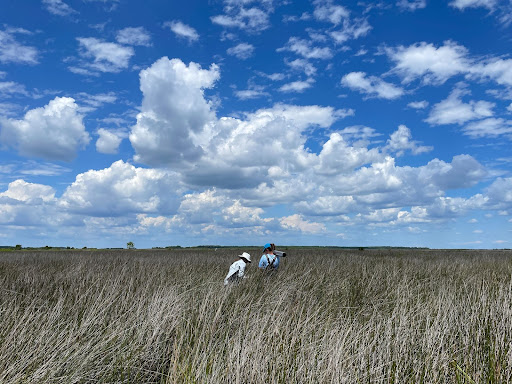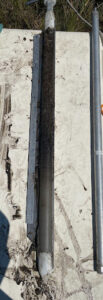

“Blue carbon” ecosystems include a variety of coastal vegetated habitats like seagrass meadows, saltmarshes, and mangrove forests that are remarkably efficient at sequestering atmospheric carbon dioxide (CO2). Salt marshes alone account for about one-third of carbon stored in soil globally, despite covering less than 10% of the earth’s land surface. The increase in global CO2 emissions and global mean surface temperature has fueled international focus on limiting emissions and increasing the number and capacity of these natural “carbon sinks.” Coincidentally, there is growing interest in the restoration of coastal vegetated habitats like salt marshes for their ability to provide protection against coastal flooding and shoreline erosion. When utilized for their protective benefits, these habitats are often referred to as “natural infrastructure.”
The beneficial use of dredged sediments, i.e. spreading sediments dredged from navigation channels over the surface of low-lying marshes to raise the elevation to a level that is more favorable for plant growth, is a common marsh restoration technique. However, the carbon-burial implications of sediment addition to marshes are not currently well understood. To help fill this knowledge gap, NCCOS and U.S. Army Corps of Engineers Engineering with Nature Program (EWN®) are partnering to study the carbon storage capabilities of a marsh restored through the application of dredged sediments at Deal Island, Maryland.
In the fall of 2024, a deteriorating marsh site at Deal Island, MD, will be restored using sediment dredged from the nearby lower Wicomico River. Scientists have spent the last few years collecting baseline data at the site, including sediment cores from the marsh platform. From a sediment core, scientists can determine how quickly sediment and organic matter have been accumulating over the last few hundred years. This information will offer insight into how the marsh has evolved through time and provide a sense of its “natural state” against which to compare post-placement conditions. Continued monitoring of carbon burial at the site after sediment placement will allow for an evaluation of the impact of restoration through beneficial use on the future value of this marsh as a carbon sink. The understanding gained through this effort will be fundamental to estimating the potential value of natural-infrastructure approaches for offsetting carbon emissions.
